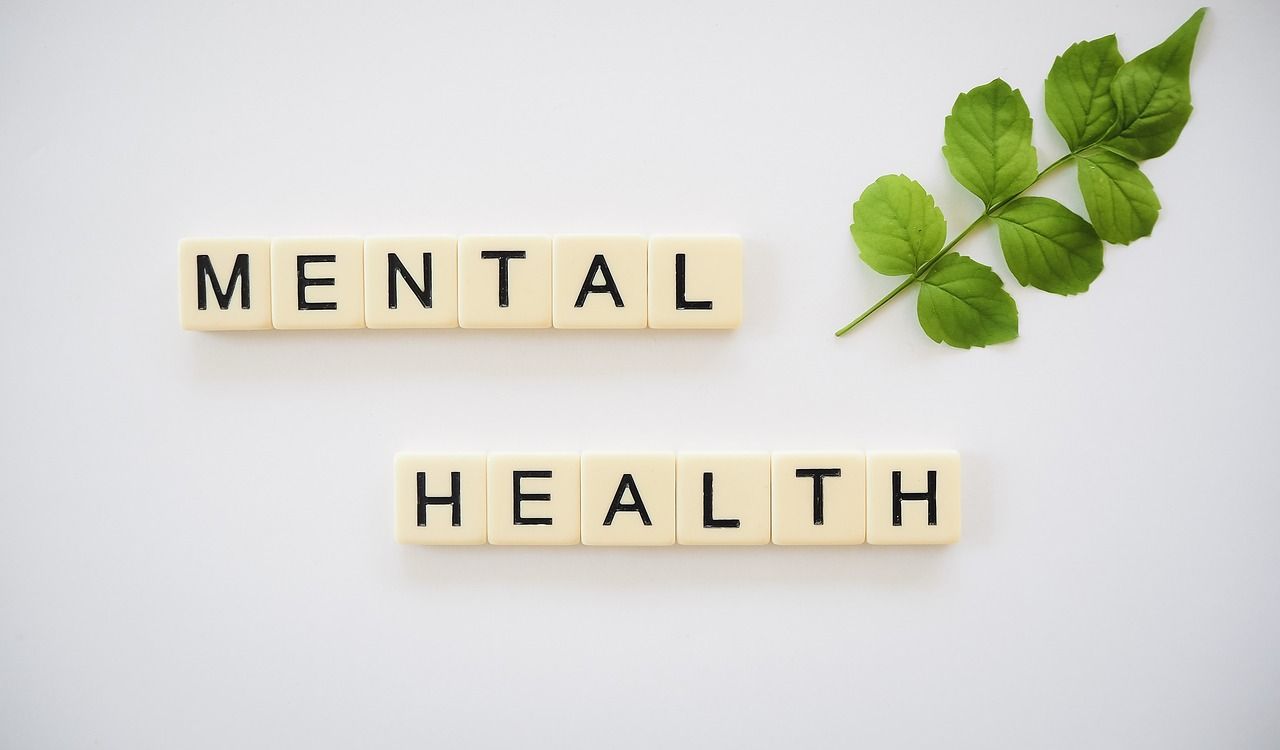Mental health has taken center stage in recent years, and for good reason. With the world moving at the speed of a toddler hyped up on sugar, it’s no surprise that stress, anxiety, and burnout are knocking on everyone’s door. But here’s the good news: the way we approach mental health is evolving. From AI-powered therapy to simple, everyday wellness habits, there’s a whole toolbox of options to keep your mind in tip-top shape. In this article, we’ll dive into the latest mental health trends, sprinkle in some practical tips, and maybe even throw in a chuckle or two. Ready? Let’s get started.
The Rise of AI Therapy: Your Virtual Therapist Awaits
Picture this: it’s 2 a.m., you’re wide awake, overthinking that awkward thing you said in a meeting three weeks ago, and your therapist is definitely not picking up the phone. Enter AI therapy, the tech world’s answer to late-night existential crises. AI-powered mental health tools are popping up faster than memes on the internet, and they’re changing the game.
What Is AI Therapy, Anyway?
AI therapy uses artificial intelligence to provide mental health support, often through chatbots, apps, or virtual assistants. These tools are designed to mimic human conversation, offer coping strategies, and even guide you through mindfulness exercises. Think of it as having a therapist in your pocket—minus the couch and the hefty bill. Apps like Woebot and Youper are leading the charge, using algorithms to analyze your mood, suggest self-care techniques, and even check in on you like a concerned friend.
But here’s the kicker: AI therapy isn’t just for late-night meltdowns. It’s accessible, affordable, and judgment-free. Feeling weird about venting to a human? No problem—your AI therapist won’t raise an eyebrow when you confess to binge-watching an entire season of reality TV in one sitting. Plus, these tools are available 24/7, which is perfect for those of us who don’t keep regular business hours for our mental health struggles.
The Science Behind It
Research shows that AI therapy can be surprisingly effective. A 2019 study published in Frontiers in Psychiatry found that AI-based interventions can reduce symptoms of depression and anxiety, especially for people who might not have access to traditional therapy. Source: Frontiers in Psychiatry. The reason? AI tools use cognitive behavioral therapy (CBT) techniques, which are proven to help reframe negative thoughts and build healthier mental habits.
Now, let’s be real—AI isn’t going to replace your human therapist anytime soon. It’s more like a trusty sidekick, offering support when you need it most. And let’s face it, sometimes you just need someone (or something) to remind you to take a deep breath and stop Googling “why am I so stressed?”
Wellness Tips to Keep Your Mind Happy
AI therapy is cool, but mental health isn’t just about tech. Sometimes, the simplest habits can make the biggest difference. Here are some wellness tips to keep your brain feeling as cozy as a baby in one of those fancy organic crib bedding sets.
1. Start Small with Mindfulness
Mindfulness sounds like something you’d find on a yoga retreat, but it’s really just about paying attention to the present moment. No incense or chanting required! Try this: next time you’re eating, focus on the taste, texture, and smell of your food. Is it a crunchy chip or a gooey chocolate brownie? Savor it. This mini mindfulness exercise can pull you out of your head and into the moment.
Pro Tip: Set a timer for one minute a day to focus on your breathing. Inhale for four seconds, hold for four, exhale for four. It’s like a mental nap—short, sweet, and refreshing.
2. Move Your Body (Even a Little)
Exercise isn’t just for gym buffs. Even a 10-minute walk can boost your mood by releasing endorphins—those feel-good chemicals in your brain. Don’t feel like leaving the house? Dance to your favorite song in the living room. Bonus points if you look absolutely ridiculous doing it. As the great philosopher, Taylor Swift, once said, “Shake it off!”
3. Limit Screen Time (Yes, Really)
We’re all guilty of scrolling through social media for hours, only to feel worse about ourselves. The solution? Set boundaries. Try the 20-20-20 rule: every 20 minutes, look at something 20 feet away for 20 seconds. It’s like giving your eyes—and your brain—a quick breather. Also, consider a “digital detox” for an hour before bed. Your mind will thank you, and you might actually remember what it’s like to read a real book.
4. Connect with Others
Humans are social creatures, even if you’re an introvert who’d rather hide under a blanket than make small talk. Reach out to a friend, call your mom, or even chat with a coworker about something other than work. Connection doesn’t have to be deep—it can be as simple as laughing over a silly meme. Laughter, by the way, is scientifically proven to reduce stress. So, go ahead and send that goofy GIF.
5. Journal Like Nobody’s Reading
Writing down your thoughts can be like unloading a backpack full of bricks. Don’t worry about grammar or making it sound poetic—just scribble down what’s on your mind. Feeling fancy? Try a gratitude journal. Write down three things you’re thankful for each day, like coffee, cozy socks, or the fact that you didn’t trip in front of your crush today. It’s a small habit that can shift your perspective in a big way.
6. Get Enough Sleep (No, Really)
If you’re skimping on sleep, your brain is basically running on fumes. Aim for 7-8 hours a night, and create a bedtime routine that screams “calm.” Think dim lights, a good book, or even some soothing music. And if you’re setting up a nursery for a little one, take a page from the baby bedding playbook—invest in soft, cozy sheets for yourself too. Because if a baby deserves organic cotton, so do you.
The Funny Side of Mental Health
Let’s take a quick detour for a laugh. Mental health can feel heavy, but sometimes you just have to giggle at the absurdity of it all. Like, why does your brain decide 3 a.m. is the perfect time to replay every embarrassing moment of your life? It’s like your mind is hosting its own late-night talk show, and you’re the only guest. “Coming up next, we revisit that time you called your teacher ‘Mom’ in front of the whole class!” The key is to laugh it off and remind yourself that everyone’s brain does this. You’re not alone, even if it feels like your head’s throwing a solo pity party.
Combining AI and Wellness: The Best of Both Worlds
Here’s where it gets exciting: you can combine AI therapy with these wellness tips for a mental health power-up. For example, many AI therapy apps come with guided meditations or journaling prompts to help you build those habits. Some even track your mood over time, so you can see what’s working (or what’s making you want to yeet your phone out the window).
Let’s say you’re using an AI app like Woebot. You tell it you’re feeling stressed, and it might suggest a quick breathing exercise or prompt you to write about what’s bugging you. Pair that with a 10-minute walk and a gratitude journal, and you’ve got a solid mental health routine that’s easier than assembling a crib (trust me, those instruction manuals are a nightmare).
Addressing Concerns: Is AI Therapy Safe?
Some folks worry that AI therapy sounds a bit… too futuristic. Is it safe? Can a robot really understand your feelings? Here’s the deal: AI therapy tools are designed with privacy in mind, using encrypted data to keep your chats confidential. They’re not perfect, but they’re a great starting point for people who aren’t ready for traditional therapy or can’t access it. Just make sure you’re using a reputable app—check reviews and look for ones backed by mental health professionals.
If you’re still skeptical, think of AI therapy as a stepping stone. It’s like training wheels for your mental health journey. You can always move on to a human therapist when you’re ready, but in the meantime, AI can help you build coping skills and feel less alone.
Why These Trends Matter
The mental health landscape is changing, and it’s about time. With AI therapy making support more accessible and wellness tips helping us take charge of our daily habits, we’re entering an era where mental health is a priority, not an afterthought. Whether you’re chatting with a virtual therapist or dancing like nobody’s watching, these tools and habits can make a real difference.
So, next time you’re feeling overwhelmed, remember: you’ve got options. Download an AI therapy app, take a walk, or just laugh at the fact that your brain thinks 3 a.m. is the perfect time for a mental TED Talk. Your mind deserves the same care as a baby’s crib—soft, safe, and cozy. Here’s to mental health trends that make life a little brighter, one deep breath at a time.






